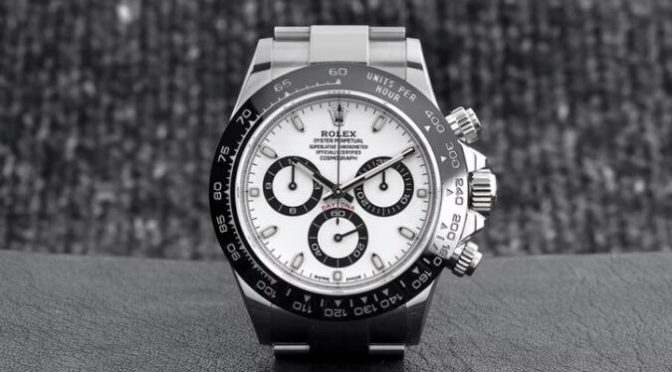
The Rolex Cosmograph Daytona represents many different things to many different people, but one of the most common reactions to the watch is frustration, at least if you’re talking about the steel-on-steel reference 116500LN. How this came to be is a story that goes back decades, all the way to the year 1963, when the first Cosmograph chronograph was introduced. The first Cosmograph, the ref. 6239, wasn’t a hit straight out of the gate for Rolex – in fact, it sold sluggishly at first. Despite the fact that chronographs were, during the 1960s, becoming an increasingly important category of watches for a company to have in its portfolio, the Cosmograph was, if not an ugly duckling among swans, certainly not the belle of the ball that it is today.
Over the decades, the watch has changed, both very much and in some respects not at all. There is a clear design continuity between the ref. 6239 and the latest models. One of the most reliable traits of Rolex as a company is the degree to which that continuity exists between much of their current catalog and many watches from the company’s past. However, in the 57 years between the launch of the 6239 and the writing of this story, the watch has undergone a tremendous technical evolution as well, making the new version of the Daytona the most advanced chronograph Rolex has ever produced – by a considerable margin.
The Rolex Cosmograph Daytona today is surrounded by an almost impenetrably dense mystique. It’s so in demand that buying one from an authorized retail requires either a very long-standing relationship or an enormous amount of patience (or both, depending on who you are) and buying a pre-owned model is prohibitively expensive for many for whom this would be, at normal retail prices, a tolerable expenditure. That it is notoriously difficult to obtain one would just by itself be enough to make enthusiasts feel a fascination not experienced for watches more easily obtained – it is after all a truism that nothing excites desire like being told you can’t have something. But there is also the collectibility of vintage Rolex Daytona watches. Anyone just getting interested in vintage watches nowadays soon finds out that, unless you have extremely deep pockets, collecting vintage Cosmograph Daytonas is out of the question at this point.
What this means is that for anyone putting on a Daytona for the first time, it is very difficult to see the watch for all the hype. You don’t so much see a stainless steel chronograph from Switzerland, as you see a watch whose notoriety and desirability, both as a collectible and as a piece of virtually unobtainable luxury watchmaking, have become so widely known that it has transcended its category to become a bona-fide global cultural phenomenon – something you can say about few other watches, if any.
How, therefore, did the Rolex Cosmograph Daytona come to be what it is today, and how can the evolution of the watch help explain its popularity? And, most importantly, is it possible to experience the Daytona not as a hype-magnet, but as a watch? That’s what I was hoping to figure out when I wore one for A Week On The Wrist. While we have done A Week On The Wrist with a steel-on-steel Daytona in the past – the article from Paul Boutros, from 2012, remains a reference-grade read that will set the gold standard for AWOTW coverage for the foreseeable future – it has now been eight years since HODINKEE published that story. And with a lot of water under the bridge horologically speaking, we decided to look at the latest version of the purist’s Daytona: the steel-on-steel ref. 116500LN.